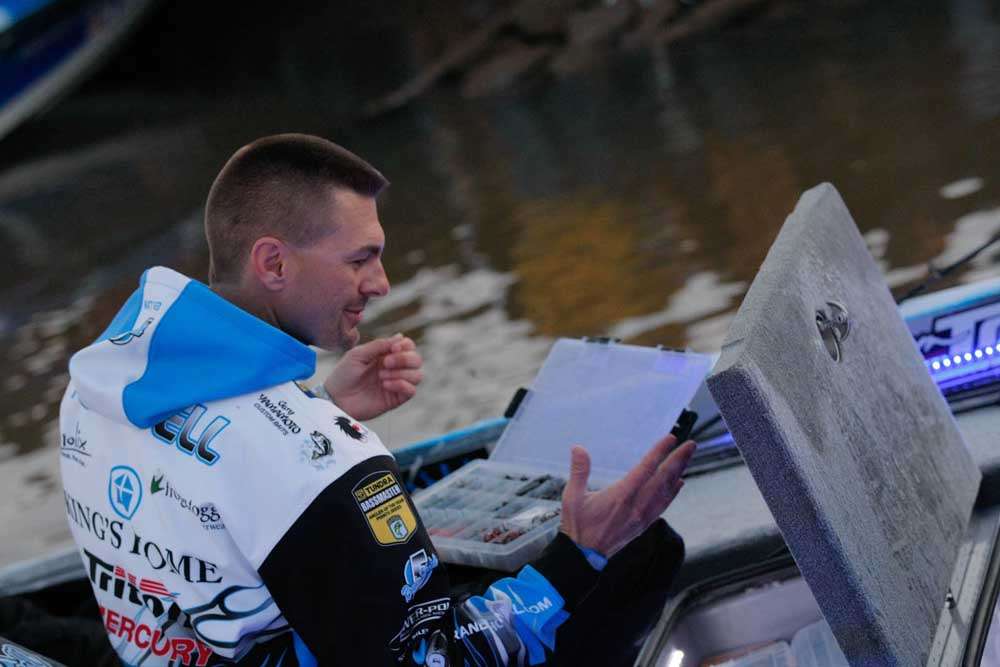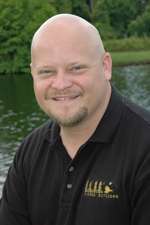
How do you measure performance in competitive fishing. That's actually pretty easy, though there a lot of ways to do it. In the Bassmaster Elite Series it's done through the pounds and ounces of the five biggest bass you can bring to the scales each round over the course of four days. Though the points system that underlies the circuit has changed over the years, it's always tried to measure the same thing — who's the best fisherman?
And the basis for changes in the system is that reasonable people can differ in their assessment of the various points accruals. Some like one method, others prefer a different one. As long as B.A.S.S. utilizes tournament formats that involve "cuts" so that every angler does not fish every day, there will always be some guesswork and iniquity in any scoring system.
In an effort to make an assessment that's as "apples to apples" as I can get it, I ran all 61 Elite Series tournaments through an analysis that ranked the anglers' finishes on a straight percentile basis. For example, if there were 100 anglers in a tournament and Jeff Kriet finished fifth, he'd score 0.05. The winner would score 0.01 and the last place finisher would score 1.00. The lower the score, the better.
The virtues of such a system are several. First of all, it's simple. Second, it adjusts for variances in field size; Elite events have had as few as 93 anglers and as many as 109 — it wouldn't be fair or accurate to give the same score to the anglers who finished 50th in each tournament. Third, it's fair; anglers are striving to finish as high in the standings as they can in order to earn more money and critical performance points.
Of course, there are also problems with this system. The most notable is that this analysis doesn't reflect the wide gaps in performance that occasionally occur. For example, when Mike McClelland won on Grand Lake in 2006, his margin of victory was 15 pounds, 9 ounces. No one was in the same performance zip code as McClelland that week. Nevertheless, this system can only score him as the first place finisher and the runner up as a second place finisher. As long as there are cuts, there's simply no other good way to do it.
Now that we know what we're dealing with, let's take a look at the 10 best Elite seasons any angler has ever had.
| 1. | 0.1379 | Kevin VanDam | 2006 |
| 2. | 0.1388 | Skeet Reese | 2009 |
| 3. | 0.1474 | Skeet Reese | 2007 |
| 4. | 0.1490 | Kevin VanDam | 2011 |
| 5. | 0.1573 | Edwin Evers | 2010 |
| 6. | 0.1653 | Skeet Reese | 2010 |
| 7. | 0.1680 | Kevin VanDam | 2009 |
| 8. | 0.1733 | Alton Jones | 2009 |
| 9. | 0.1768 | Kevin VanDam | 2007 |
| 10. | 0.1990 | Kevin VanDam | 2008 |
That 0.1379 by KVD in 2006 means that he averaged a finish in the top 14 percent in 2006. It's the best average finish over the course of an entire season in Elite history. In all, VanDam has half of the top 10 spots.
If you've got a really good memory, you might be saying to yourself "Hey, VanDam didn't win AOY in 2006 — how could he have the best average performance?"
Great question.
KVD was disqualified from the Santee Cooper tournament that year because he allowed someone else to operate his boat during practice while he stood on the bow looking for bedding fish (Randy Howell and Alton Jones were disqualified for the same thing). The rule was new and it cost VanDam the tournament entry, opening the door for Michael Iaconelli to claim AOY. Had VanDam fished the tournament and weighed in just one bass, he would have been AOY in 2006. Rather than the title Ike won, it was the one that KVD lost.
As you can see from those numbers, if you want to win AOY you really need to average a top 20 percent finish for the season. Who's doing that in 2012? Well, our leader at the halfway point, Randy Howell, is crushing it. He's at 0.1061 — way better than anyone has ever done for a full season. David Walker is also posting AOY-type numbers at 0.1717.
In 2010, Skeet Reese was an astounding 0.0314 (he averaged a finish in the top three percent!) for the first five tournaments. The next two events weren't nearly as good and he fell to the sixth best season ever.
If those are the best seasons, what about the worst? Well, since you asked ….
| 1. | 0.9583 | Brent Broderick | 2011 |
| 2. | 0.9518 | Conrad Picou | 2006 |
| 3. | 0.8957 | Kevin Langill | 2009 |
| 4. | 0.8696 | Scott Ashmore | 2010 |
| 5. | 0.8572 | Jimmy Houston | 2006 |
| 6. | 0.8556 | Brent Broderick | 2009 |
| 7. | 0.8517 | Randy Yarnall | 2006 |
| 8. | 0.8499 | Paul Hirosky | 2008 |
| 9. | 0.8412 | Dave Smith | 2009 |
| 10. | 0.8266 | Mark Burgess | 2010 |
Those numbers are not pretty. In eight Elite events last year, Broderick's best finish was 90th in a field of 99 anglers. The affable Ohioan had an epically bad season that saw him cash no prize money checks at all. Brutal!
And how about the best average finish for a career — who has that record?
As if you needed to ask! Of course, it's Kevin VanDam. With five of the top 10 seasons to his credit, KVD would have to rank head and shoulders above the rest of competition, and he does. Here are the top 10 who have fished a minimum of 24 Elite Series events (three full seasons — just to keep things fair).
| 1. | 0.1938 | Kevin VanDam |
| 2. | 0.2501 | Skeet Reese |
| 3. | 0.3084 | Todd Faircloth |
| 4. | 0.3096 | Edwin Evers |
| 5. | 0.3216 | Aaron Martens |
| 6. | 0.3292 | Alton Jones |
| 7. | 0.3380 | Michael Iaconelli |
| 8. | 0.3399 | Steve Kennedy |
| 9. | 0.3462 | Randy Howell |
| 10. | 0.3597 | Greg Hackney |
Ott DeFoe and Keith Combs — two rookies from 2011 — have a real shot to crack the top 10 once they have enough tournaments under their belts, but for now their sample size is just too small. They've proven they can compete, but they've fished about one-fifth of the Elite events that the anglers on the list have fished. We'll check back in on them in another year or two.
Next time we'll take a look at what it really takes to qualify for the Bassmaster Classic through the Elite Series.





